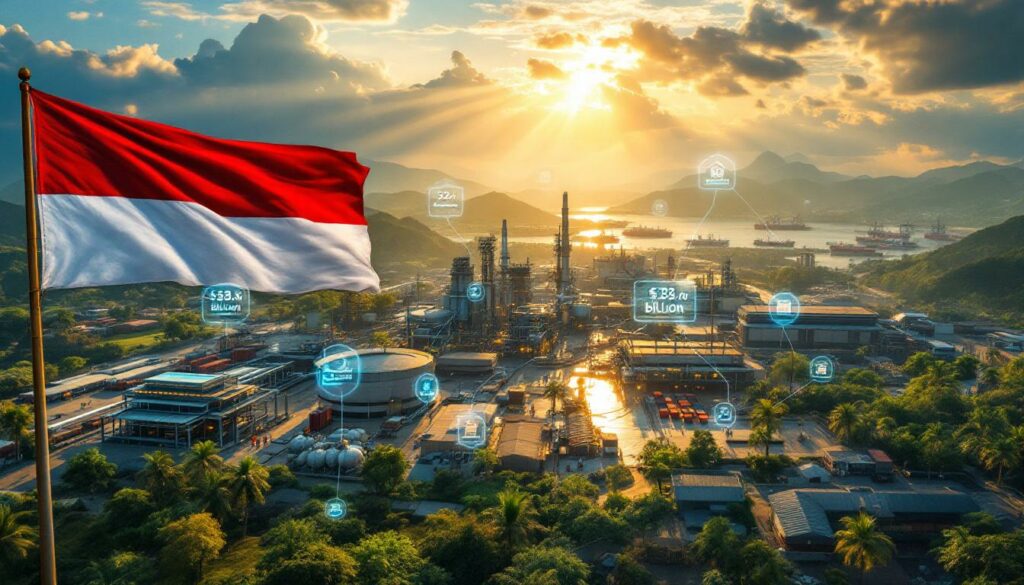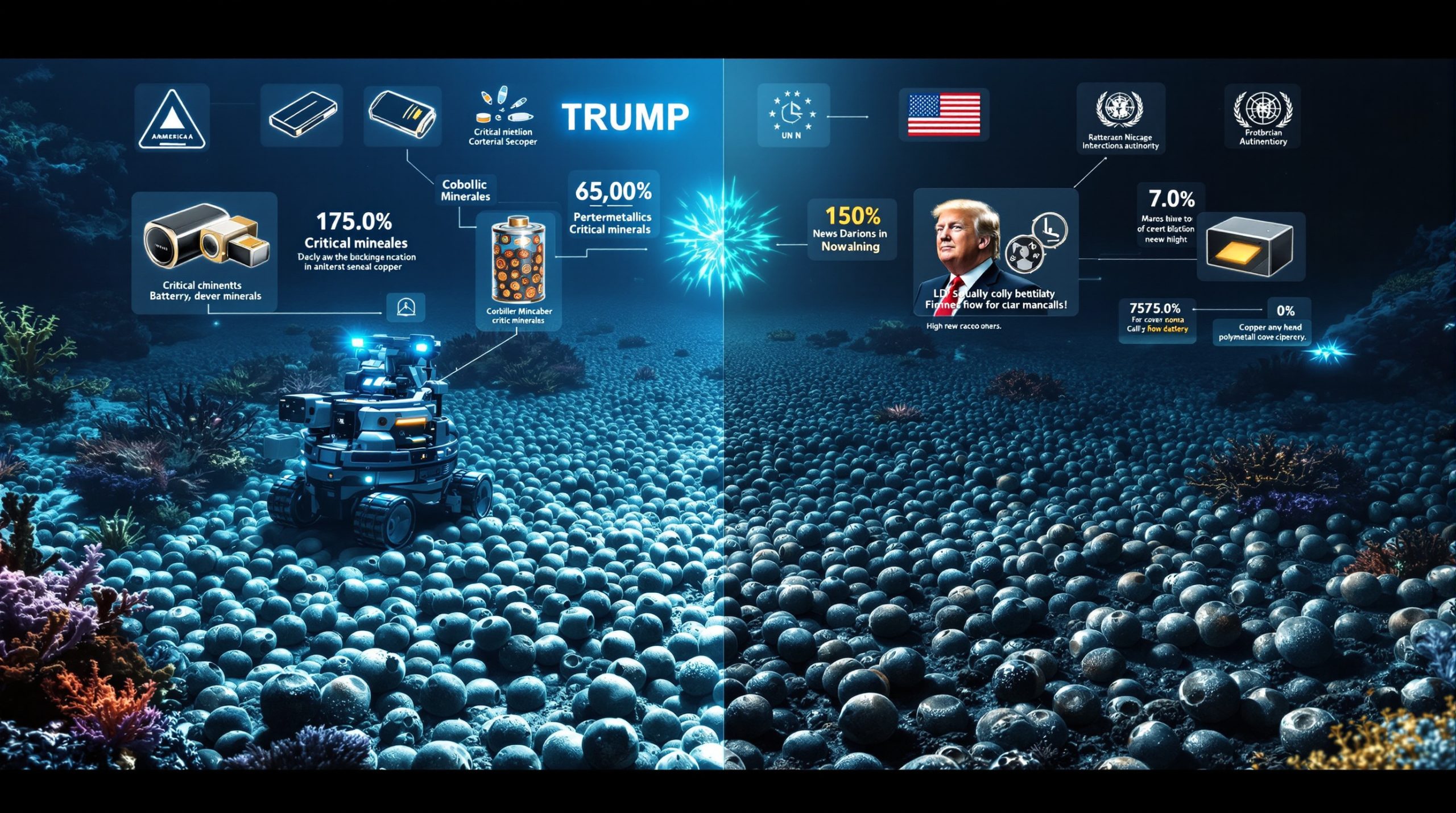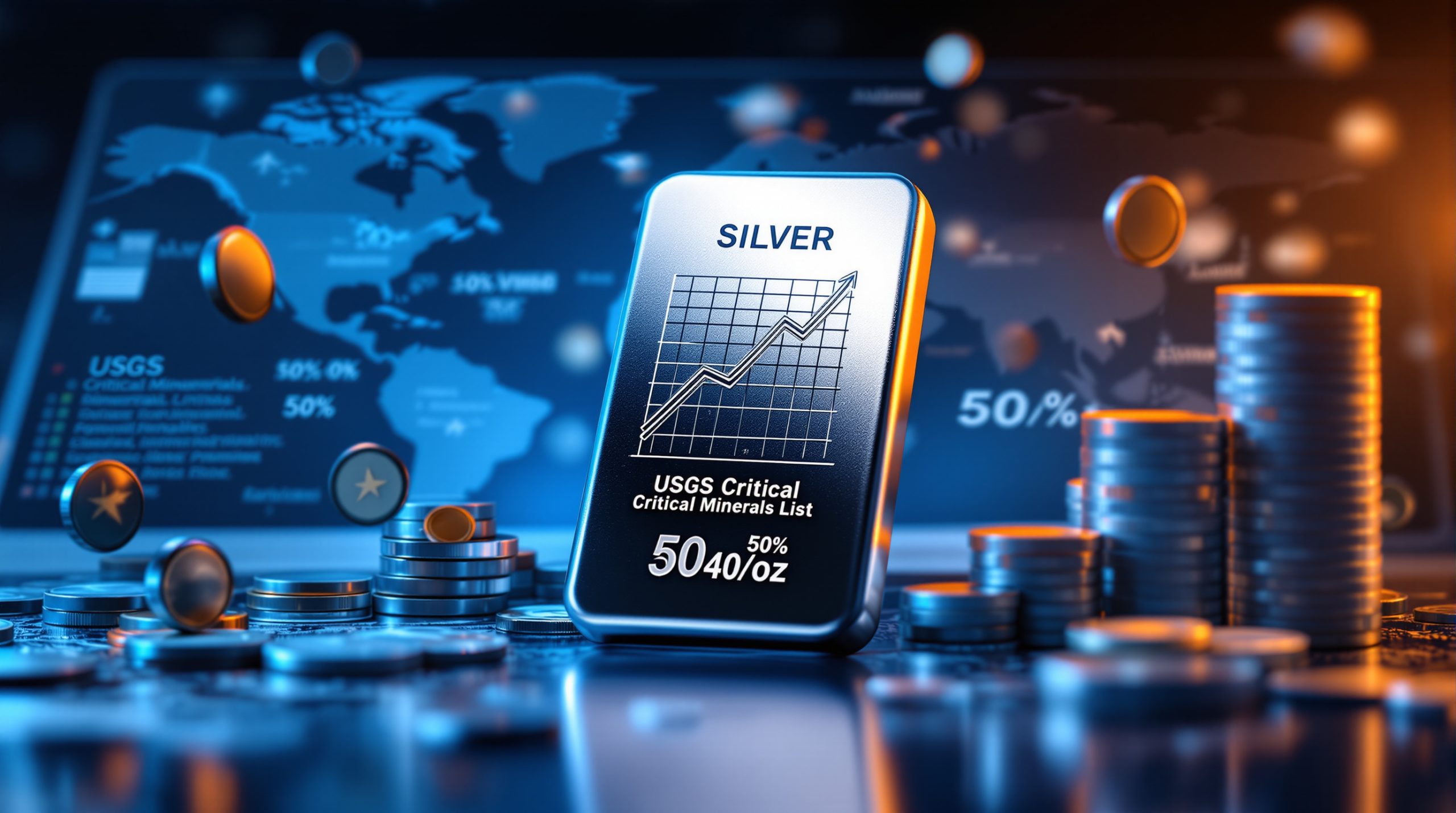What is Indonesia's Danantara Fund and How Does it Support Mining Projects?
Indonesia's Danantara Fund represents a bold economic transformation initiative under President Prabowo Subianto's administration. Established as a sovereign wealth fund with a unique domestic focus, Danantara aims to revolutionize how Indonesia manages and develops its abundant natural resources.
Unlike traditional sovereign wealth funds that primarily invest internationally, Danantara specifically targets domestic infrastructure and processing capabilities. The fund operates by managing shares of state-owned enterprises and strategically reinvesting dividend income into high-priority national development projects.
"Danantara has the capacity to finance and manage projects that transform Indonesia's position in global value chains," stated Energy and Mineral Resources Minister Bahlil Lahadalia when announcing the fund's major mining investment portfolio.
At its core, Danantara addresses a critical economic challenge: Indonesia has historically exported vast quantities of unprocessed raw materials, missing opportunities to capture added value. Through strategic investments in processing facilities, refineries, and manufacturing plants, the fund aims to keep more economic benefits within Indonesia's borders.
Danantara's mining-focused investments follow a comprehensive assessment process, with projects initially studied by government ministries before transfer to the fund for final evaluation. This ensures alignment with both commercial viability and national strategic objectives.
How Much Investment is Indonesia Channeling Through Danantara for Mining Projects?
Indonesia has identified an ambitious $38.6 billion investment portfolio comprising 18 priority development projects through its sovereign wealth fund Danantara, as confirmed by the Indonesia mining ministry proposes 18 development projects for Danantara funding. This substantial commitment represents one of Southeast Asia's most significant resource development initiatives.
The fund recently secured a $10 billion credit line to support its investment activities, providing essential financial backing for initial project development. This credit facility demonstrates the government's commitment to turning project proposals into operational realities.
Breakdown of Priority Projects
The 18 priority projects span three strategic categories:
- 8 projects focused on minerals and coal processing, targeting value addition for Indonesia's abundant natural resources
- 2 projects supporting energy security initiatives, reducing dependence on imported energy products
- 8 projects targeting energy transition technologies and agricultural/fishery product processing, positioning Indonesia for future economic trends
"We've conducted comprehensive initial studies for each project before transferring them to Danantara for final assessment and implementation," explained Minister Bahlil Lahadalia. "These projects represent our commitment to domestic processing capabilities and economic transformation."
The investment scale is deliberately calibrated to support President Prabowo's ambitious target of 8% economic growth by 2029. By channeling investments across multiple resource sectors, Danantara creates a diversified approach to resource-based economic development.
Market Perspective: Indonesia's $38.6 billion resource development portfolio through Danantara represents approximately 3.5% of the country's current GDP, making it one of the most ambitious domestic investment initiatives in Southeast Asia.
What Types of Mining and Energy Projects Will Danantara Fund?
Danantara's investment portfolio encompasses a strategic mix of processing facilities and infrastructure projects designed to maximize value from Indonesia's natural resources while supporting energy transition trends.
Strategic Mineral Processing Facilities
The fund prioritizes projects that transform raw materials into higher-value products:
- Iron smelters to process domestic iron ore into steel products, reducing imports and supporting construction sectors
- Alumina refineries to convert Indonesia's substantial bauxite reserves into intermediate products for aluminum production
- Mineral beneficiation plants that upgrade ore quality through concentration processes
- Coal processing facilities for producing higher-grade coal products and extracting valuable byproducts
These processing facilities directly address Indonesia's historical role as a raw material supplier by creating domestic capacity to refine and upgrade commodities before export.
Energy Infrastructure Development
Danantara's energy-focused investments target both traditional energy security and future transition needs:
- Oil refineries to process crude oil into petroleum products, reducing Indonesia's dependence on imported fuels
- Strategic storage facilities to enhance energy security during supply disruptions
- Solar panel manufacturing plants to support domestic renewable energy deployment while creating manufacturing jobs
- Biofuel production facilities focused on sustainable aviation fuels (SAFs) for the growing air transport sector
"We are particularly focused on employing the best available technology through strategic partnerships," explained Rosan Roeslani, CEO of Danantara. "This approach ensures our investments meet both commercial and sustainability objectives."
The balanced portfolio approach allows Indonesia to address immediate energy security concerns while simultaneously building capacity in transition technologies that will shape future energy systems.
How Does Danantara's Investment Strategy Work?
Danantara employs a sophisticated investment approach that combines government direction with commercial discipline, creating a framework that balances strategic national interests with financial sustainability.
Funding Mechanisms and Partnerships
The fund utilizes multiple financing structures tailored to project requirements:
- Direct investment from Danantara's sovereign portfolio, using the fund's $10 billion credit line
- Co-investment partnerships with state-owned enterprises that bring sector expertise
- Strategic collaborations with domestic private companies to leverage local knowledge
- International technology partnerships providing access to advanced processing techniques
"The financing can come from various sources—Danantara itself, state-owned enterprises, or even domestic and foreign private companies," stated CEO Rosan Roeslani. "Our priority is securing the best technology and expertise for each project."
This flexible approach allows Danantara to optimize capital deployment while ensuring projects benefit from appropriate technical capabilities and market access.
Project Selection and Implementation Process
Danantara follows a structured evaluation framework:
- Initial government feasibility studies conducted by relevant ministries
- Transfer to Danantara for comprehensive investment assessment
- Evaluation against investment criteria including financial returns, strategic alignment, and development impact
- Implementation through tailored partnership structures based on project requirements
- Ongoing monitoring and performance optimization to ensure strategic objectives are met
This systematic approach ensures that only commercially viable projects receive funding while maintaining alignment with Indonesia's broader economic transformation goals.
Projects must demonstrate both commercial viability and strategic national importance, creating a balanced portfolio that supports long-term economic development while generating sustainable returns.
What is President Prabowo's Vision for Indonesia's Resource Development?
President Prabowo Subianto has articulated a transformative vision for Indonesia's natural resources, centered on capturing more value domestically through advanced processing and manufacturing capabilities.
Economic Transformation Goals
The President's resource development strategy is built around several ambitious targets:
- Achieving 8% economic growth by 2029, significantly outpacing Indonesia's recent growth rates
- Transforming Indonesia from a raw material exporter to a processed product manufacturer
- Creating high-quality employment opportunities through industrial development
- Reducing vulnerability to commodity price fluctuations through diversification
- Building technical capabilities that position Indonesia as a regional industrial leader
"These investments represent a fundamental shift in how Indonesia approaches its natural resources," explained Minister Bahlil Lahadalia. "We're moving from simply extracting and exporting to creating complete domestic value chains."
This vision represents a departure from previous approaches that prioritized extraction volumes over value addition, positioning Indonesia to capture a greater share of global resource value chains.
Resource Nationalism Strategy
President Prabowo's approach incorporates elements of resource nationalism within a framework that remains open to international partnerships:
- Strategic asset management through Danantara's control of state-owned enterprise shares
- Dividend reinvestment into national priority projects rather than general government spending
- Domestic processing requirements to ensure raw materials support local industrial development
- Technology transfer emphasis in international partnerships to build domestic capabilities
- Balanced participation models that maintain Indonesian control while welcoming foreign expertise
This nuanced approach attempts to balance the benefits of resource nationalism with the practical need for international technology and capital, creating a "pragmatic nationalism" that prioritizes economic outcomes.
The strategy explicitly recognizes that capturing value from natural resources requires both asserting national control and engaging productively with global partners who bring essential expertise and market access.
How Does Danantara Compare to Other Sovereign Wealth Funds?
Danantara represents a distinctive approach to sovereign wealth management, differentiating itself from more traditional funds through its focus on domestic development and industrial transformation.
Unique Aspects of Indonesia's Approach
Several characteristics distinguish Danantara from other sovereign wealth vehicles:
- Domestic investment focus rather than international portfolio diversification
- Direct industrial development compared to passive financial investment strategies
- Natural resource value addition versus pure extraction or commodity trading
- Vertical integration emphasis spanning multiple stages of resource value chains
- Balanced portfolio across traditional and transition sectors rather than specialized focus
Unlike funds like Norway's Government Pension Fund Global that primarily invest internationally for financial returns, Danantara explicitly targets domestic economic transformation through strategic project development.
The fund's approach also differs from regional peers like Malaysia's Khazanah Nasional by emphasizing processing infrastructure over corporate investments, reflecting Indonesia's resource-intensive economic structure.
Investment Scale in Regional Context
Danantara's $38.6 billion development portfolio represents a substantial commitment within the Southeast Asian investment landscape:
- Significantly larger than similar initiatives in neighboring countries on a per-project basis
- More focused on industrial infrastructure than comparable ASEAN sovereign investments
- More directly aligned with national economic transformation goals than purely financial objectives
- Potentially more influential in reshaping regional supply chains due to Indonesia's resource importance
"Danantara's scale allows us to undertake transformative projects that individual ministries or companies might find challenging," noted CEO Rosan Roeslani, highlighting the fund's ability to mobilize capital for strategic priorities.
This scale, combined with Indonesia's substantial resource base, positions Danantara to potentially reshape regional resource processing patterns by creating domestic alternatives to traditional processing hubs in neighboring countries.
What Challenges Might Affect Danantara's Mining Investment Strategy?
Despite its ambitious vision, Danantara faces significant implementation challenges that could impact the success of its mining and energy investments.
Implementation Considerations
Several factors may complicate project execution:
- Project development timelines often extending beyond political cycles, requiring consistent support
- Technical complexity of advanced processing facilities like alumina refineries and biofuel plants
- Capital intensity requiring sustained financial commitment despite changing market conditions
- Coordination requirements across multiple government agencies and private partners
- Environmental and social management in sensitive resource development contexts
"Successfully implementing these projects requires not just funding but coordinated expertise across multiple domains," acknowledged Minister Bahlil Lahadalia when discussing the transfer of projects to Danantara.
The scale and technical complexity of many priority projects introduce execution risks that will require sophisticated project management capabilities within Danantara and its implementation partners.
Critical Success Factors
Key elements that will determine Danantara's effectiveness include:
- Governance transparency in project selection and implementation decisions
- Technical capability to evaluate and oversee complex processing technologies
- Balanced investment criteria that consider both commercial returns and strategic objectives
- Policy consistency that provides certainty for long-term investments
- Adaptive implementation that responds to changing market conditions and technology trends
Maintaining a balance between strategic national objectives and commercial discipline will be particularly challenging in a global resource market characterized by price volatility and iron ore trends.
Industry Perspective: "The success of resource processing projects depends on both technical execution and market timing. Danantara will need to carefully sequence investments to align with global demand trends while building domestic capabilities." – Mining industry analysis
How Will These Investments Impact Indonesia's Position in Global Mineral Markets?
Danantara's investments could significantly reshape Indonesia's role in global resource markets, transforming the country from primarily a raw material supplier to a processor and manufacturer of higher-value products.
Potential Market Implications
Several market shifts may result from successful implementation:
- Reduced raw material exports as domestic processing captures more value
- New processed product export streams including refined metals and manufactured components
- Altered regional trade patterns as Indonesia processes materials previously sent to neighboring countries
- Increased participation in high-value supply chains for energy transition materials
- Enhanced bargaining power in resource markets through greater processing options
"By developing domestic processing capabilities, Indonesia can capture price premiums and reduce vulnerability to commodity price cycles," explained Minister Bahlil Lahadalia when outlining the strategic importance of the investment portfolio.
These shifts would represent a significant evolution in Indonesia's economic model, moving beyond the resource extraction focus that has characterized much of its development history.
Strategic Positioning in Critical Minerals
Danantara's investments are particularly significant for minerals essential to global energy transition:
- Battery material processing creating opportunities in electric vehicle supply chains
- Renewable energy manufacturing positioning Indonesia in growing solar component markets
- Energy storage infrastructure supporting both domestic and export markets
- Sustainable aviation fuel production addressing a rapidly growing demand segment
By investing in processing capabilities for these strategic materials, Indonesia could secure a more influential position in supply chains that are becoming increasingly important as global energy systems evolve.
This strategic repositioning could enhance Indonesia's geopolitical importance while creating more stable economic foundations than traditional raw material exports have provided. Furthermore, it aligns with global critical minerals strategy frameworks, potentially offering bauxite project benefits and other mineral beneficiation insights that could reshape regional industrial development.
FAQ: Indonesia's Mining Development Through Danantara
What is Danantara Indonesia?
Danantara is Indonesia's sovereign wealth fund established under President Prabowo Subianto's administration. It functions as the government's primary investment vehicle for achieving the administration's ambitious 8% economic growth target by 2029. The fund operates by managing state-owned enterprise shares and strategically reinvesting dividends into commercial projects with national significance, particularly those that enhance domestic processing capabilities for Indonesia's abundant natural resources.
Who oversees Danantara's investment decisions?
Danantara is led by CEO Rosan Roeslani, who works with the fund's management team to assess projects against investment criteria while coordinating with government ministries that propose strategic initiatives. Investment decisions follow a structured process where projects are evaluated for both commercial viability and strategic alignment with national development priorities. The fund maintains operational independence while following strategic direction from government economic planning frameworks.
How does Indonesia's mining ministry collaborate with Danantara?
The mining ministry, led by Minister Bahlil Lahadalia, conducts initial project studies and feasibility assessments before transferring priority projects to Danantara for investment consideration and implementation. This collaboration creates a pipeline of vetted opportunities aligned with national resource development strategies. The ministry identifies projects that maximize value from Indonesia's natural resources, while Danantara provides the financial structuring, implementation expertise, and ongoing management to bring these projects to fruition.
What types of mining projects are prioritized for funding?
Priority is given to projects that enhance domestic processing capabilities, support energy security, facilitate energy transition, and develop value-added processing for natural resources. Specific examples include iron and alumina smelters, oil refineries, solar panel manufacturing facilities, and biofuel production plants. Projects are selected based on their potential to transform raw materials into higher-value products within Indonesia rather than exporting unprocessed resources, creating more domestic economic value and employment opportunities.
Want to Invest in the Next Major Mineral Discovery?
Discovery Alert's proprietary Discovery IQ model delivers instant alerts on significant ASX mineral discoveries, transforming complex data into actionable investment insights. Learn why historic discoveries can generate substantial returns by visiting the Discovery Alert discoveries page and position yourself ahead of the market with a 30-day free trial.




